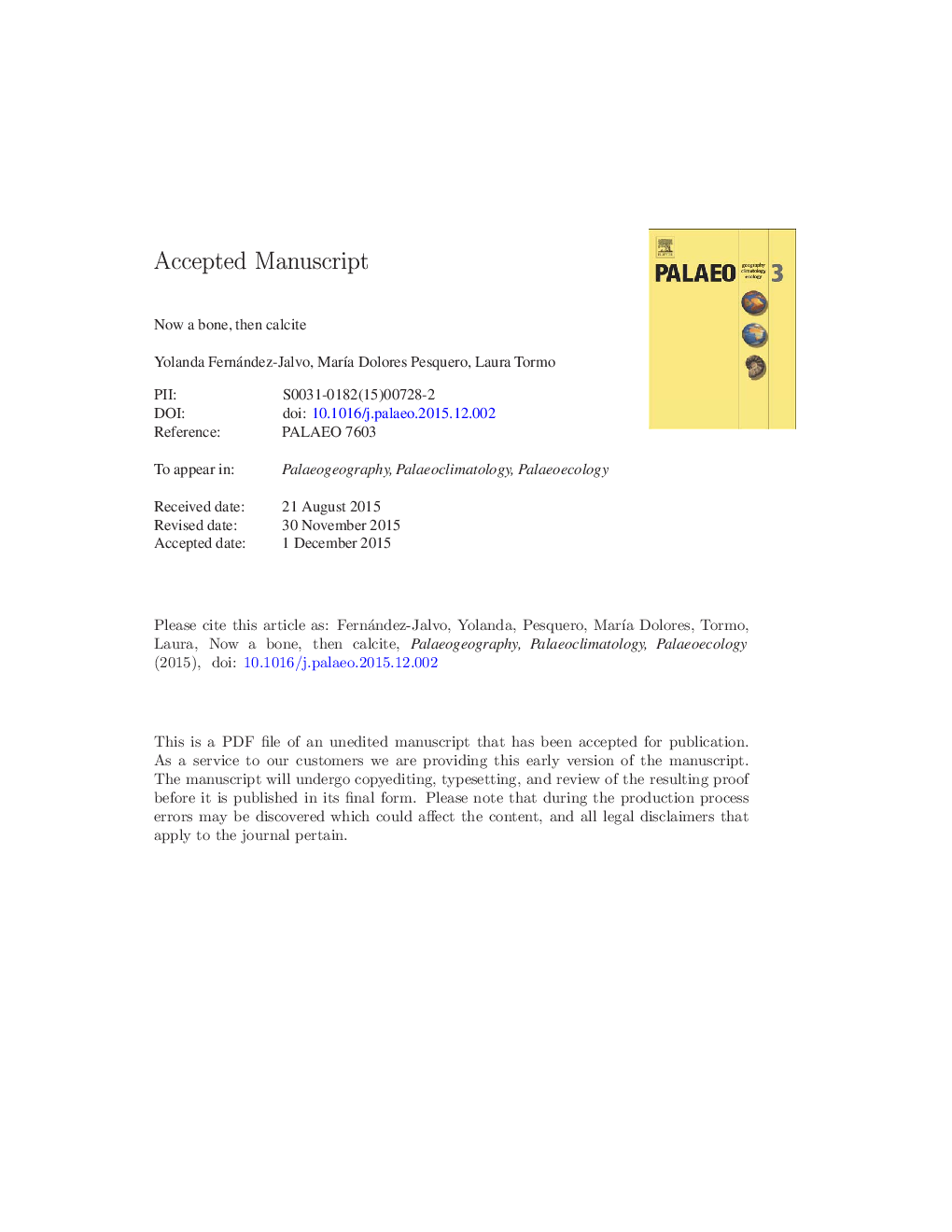| Article ID | Journal | Published Year | Pages | File Type |
|---|---|---|---|---|
| 6349244 | Palaeogeography, Palaeoclimatology, Palaeoecology | 2016 | 35 Pages |
Abstract
Observation of this chalky substance under high magnifications reveals a delicate structure of microcrystals. These crystals enclose microtunnels and grooves identical in shape and size to the characteristic bone bioerosion caused by aquatic microorganisms. This microtunnelling preservation allows us to confirm that disaggregate calcite crystals replaced areas where once there had been bone. Furthermore, the bone-chalky material transformation had to occur when microorganisms were still in the interior of these tunnels; otherwise, the delicate empty microtunnels observed today would have collapsed. Two calcareous palaeo-lakeshore sites show identical phenomenon. Detailed taphonomic, environmental and chemical studies indicate that the transformation process was initiated by microorganisms arising from a combination of their metabolism and the alkaline environment they inhabited that caused a local and sudden increase in local acidity. This chalky material is referred to as biogenic, in contrast to environmental calcite deposits (geodes and calcite infilling bone fissures) that formed in the lake conditions. The calcium carbonate phase of both biological and environmental origin in these two palaeolakes is aragonite, which forms under restricted situations of aridity and warming, and may provide a precise indication of environmental conditions when these sites formed. Similar situations may occur today in arid areas.
Keywords
Related Topics
Physical Sciences and Engineering
Earth and Planetary Sciences
Earth-Surface Processes
Authors
Yolanda Fernández-Jalvo, MarÃa Dolores Pesquero, Laura Tormo,
